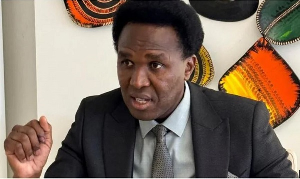The upgrade of the Kumasi airport into an international facility and its renaissance as Prempeh I International Airport have messages to engage the attention of the public.
Even though five countries in the world, namely Monaco, San Marino, Andorra, Lichtenstein, and the Vatican, do not have airports because of a lack of space, those that do have them should have more for various reasons.
Thus, for example, the United States has 13,513 airports, of which 102 are international, Russia has over 2000, with 67 international, and Indonesia has 673, with 23 of them being international.
Generally, both domestic and international airports facilitate the swift movement of goods, connecting businesses with suppliers and customers.
They are also said to enable perishable products and time-sensitive cargo to reach distant markets quickly.
In particular, international airports facilitate swift movement across countries and continents, thereby supporting global supply chains and boosting the export potential of countries.
Though international airports have domestic facilities attached to them, they are usually larger than the domestic ones as they feature longer runways and other facilities to accommodate heavier aircraft, such as the Boeing 747 and Airbus A380 commonly used for international and domestic travel.
This was the same idea behind the upgrade of the Kumasi airport when, in June 2018, President Akufo-Addo cut the sod for the commencement of phase two of the project.
Now the facility has a 2,300-metre runway to accommodate Boeing 737-800 series aircraft.
We think that the Kumasi Airport, now named Prempeh I International Airport, would make international travel easier for people from the Ashanti, Ahafo, Bono and Bono East, Northern, Savanna, Upper East, and Upper West regions.
It will save them money, time, and all the hassles involved in coming to Accra to catch flights abroad or land first in Accra on their return from their travels.
For those going to Kumasi, for instance, things will be the easiest.
The new international airport will certainly boost the Ashanti regional economy, which the country can leverage for its progress.
Some businesses can open branches in Kumasi and nearby communities, and new ones can crop up.
The cost of land close to the airport will appreciate.
We can also say beautiful edifices would spring up around.
We, therefore, appeal to the government to speed up the process to tackle phase 3 of the redevelopment of the airport for more benefits to be derived from it.
Above all, we hope the airport will be maintained regularly and upgraded when the need arises.
Now regarding the renaming of the airport, Prempeh I, we think President Nana Addo Dankwa Akufo-Addo has said it all (see story on page 8), and so we will not belittle the point.
However, there is a lesson we want every leader, elected or traditional, to note.
Otumfuo Osei Tutu II is said to have played a pivotal role in the redevelopment of the Kumasi airport, yet he did not fight for it to be named after him.
The Otumfuo has demonstrated real selflessness, which our leaders need; he has given honour to whom it is due.
We commend him for this and recommend this spirit to politicians, even if the honour is due to their opponents.
Click to view details



Editorial News of Monday, 13 May 2024
Source: ghanaiantimes.com.gh

















